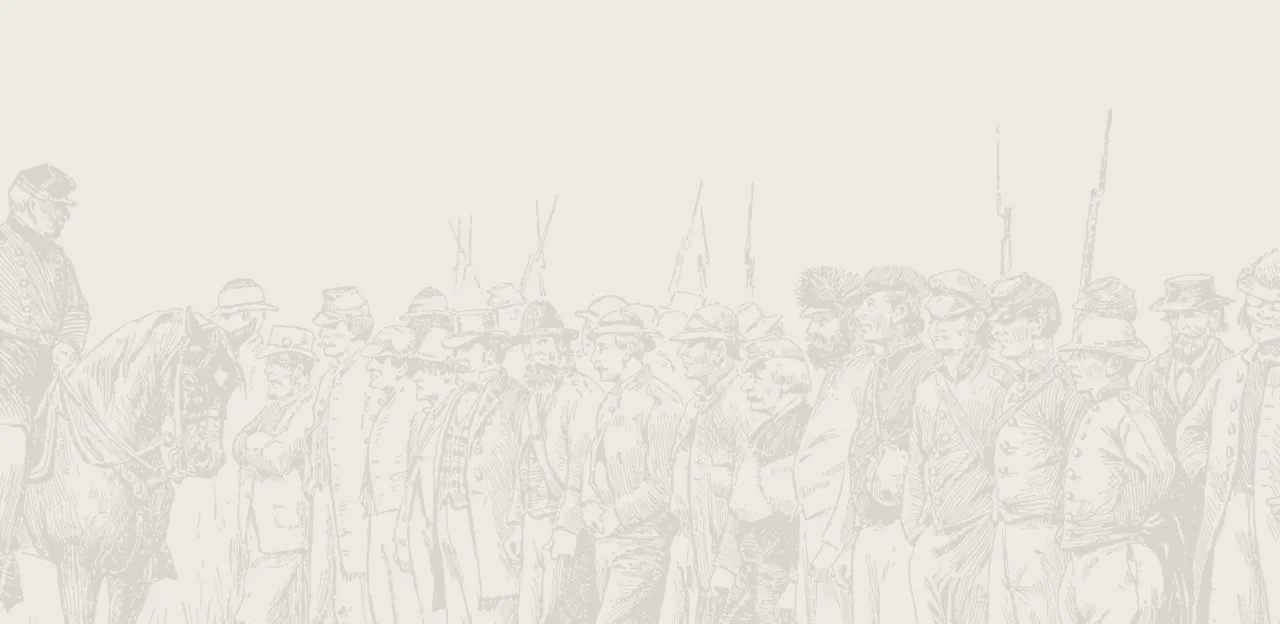Cold Harbor

Battle of Cold Harbor
After fighting inconclusively along Totopotomoy Creek, Grant ordered Maj. Gen. Philip Sheridan's cavalry to move south and capture the strategic crossroads at Old Cold Harbor. Roads emanating through this critical junction led to Richmond as well as supply and reinforcement sources for the Union army. On May 31, after a sharp contest with Confederate cavalry under Maj. Gen. Fitzhugh Lee, Sheridan and his troopers seized the intersection. The Confederate cavalry were soon joined by infantry of Maj. Gen. Robert Hoke's division. After a short battle, Union cavalry drove the Confederates beyond the crossroads where they began to build defensive trenches.
Hearing reports that Lee was extending his line to the James River, Grant was determined to extend his left flank, overpower Lee, and come between the Confederates and Richmond, all while keeping access to the James open. On the morning of June 1, Sheridan beat back a half-hearted attack by Hoke’s and Maj. Gen. Joseph Kershaw's divisions. Encouraged by this success, Grant ordered up Maj. Gen. William "Baldy" Smith’s XVIII Corps and Maj. Gen. Horatio Wright’s VI Corps to relieve Sheridan, and strike the Confederate defenses that same day. However, confused orders and bad roads slowed the movement of the two Federal corps; Grant’s impromptu attack was delayed until 5:00 pm. A brigade from Wright’s corps briefly broke through the Confederate line, only to be pushed back by a counterattack. Meanwhile, Maj. Gen. George G. Meade ordered Maj. Gen. Winfield S. Hancock’s II Corps to march twelve miles overnight to provide support for another assault.
Meade ordered an early morning attack for June 2, but Smith refused. Hancock’s II Corps had gotten lost during the night march and did not arrive until about 6:30 am that morning. Meade postponed the attack until 5:00 pm that day but Grant, concerned that Hancock’s men wouldn’t be ready to attack due to exhaustion, advised Meade to wait until June 3. Lee, taking advantage of this gift, ordered his troops to construct an impressive and intricate series of entrenchments to reinforce his position in the heavily wooded and uneven territory.
At 4:30 am on the morning of June 3, the II, VI, and XVIII Corps launched the main attack through the darkness and fog. As the attack began, the soldiers became caught in the swamps, ravines, and heavy vegetation, losing contact with each other. Angles in the Confederate works allowed Lee’s men to easily enfilade the Federal ranks as they advanced. An estimated 7,000 men were killed or wounded within the first thirty minutes of the assault and the massacre continued through the morning. In Hancock’s sector, elements of the II Corps managed to seize a portion of the Rebel works only to be bombarded by Confederate artillery that turned the trenches a deathtrap. Smith’s corps was unfavorably funneled into two ravines and subsequently mowed down when they reached the Confederate’s position. Pinned down by the tremendous volume of Confederate fire, the remaining Federals dug trenches of their own, sometimes including bodies of dead comrades as part of their improvised earthworks. At 12:30 pm, after riding the beleaguered Union lines himself, Grant suspended his attack at the advice of the corps commanders.
From June 4 to June 12, the days were filled with minor attacks, artillery duels, and sniping. On June 7, Lee and Grant agreed to a two-hour truce to allow the Federals a chance to retrieve their wounded. However, by then few of the wounded were found alive as thousands had died under the summer sun during those five days. Grant later wrote, "I have always regretted that the last assault at Cold Harbor was ever made... No advantage whatever was gained to compensate for the heavy loss we sustained."
His regrets notwithstanding, Grant planned his next move. He sent Sheridan to destroy the Virginia Central Railroad to the west and on June 12 ordered Meade to evacuate Cold Harbor, cross the James, and proceed toward Petersburg.





